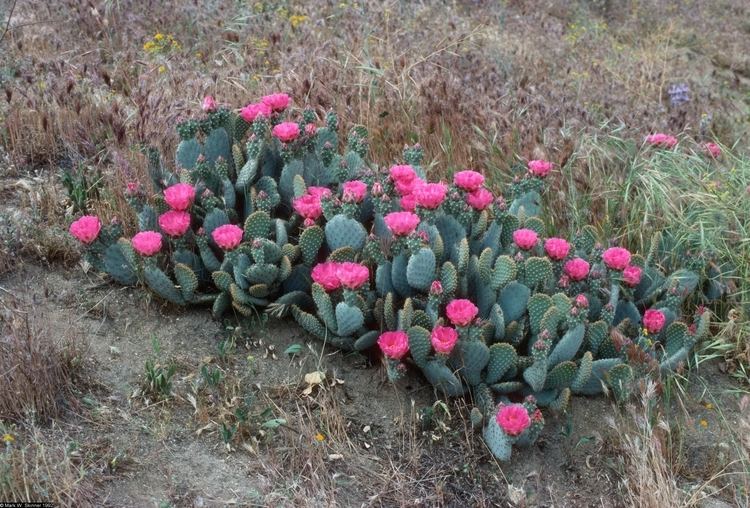Family Cactaceae Rank Species | Genus Opuntia Higher classification Prickly pear | |
 | ||
Similar Cactus, Prickly pear, Opuntia engelmannii, Opuntia phaeacantha, Opuntia polyacantha | ||
Opuntia basilaris, the beavertail cactus or beavertail pricklypear, is a cactus species found in southwest United States. It occurs mostly in the Mojave Desert, Anza-Borrego Desert State Park, and Colorado Deserts, and also in the Colorado Plateau and northwest Mexico; it ranges through the Grand Canyon and Colorado River region to southern Utah, and in western Arizona, regions along the Lower Colorado River Valley. Opuntia basilaris is a medium-sized to small prickly pear cactus, depending on variety, growing to about 60 cm tall, with pink to rose colored flowers. A single plant may consist of hundreds of fleshy, flattened pads. These are more or less blue-gray, depending on variety, growing to a length of 14 cm and are maximum 10 cm wide and 1 to 1.5 cm thick. They are typically spineless, but have instead many small barbed bristles, called glochids, that easily penetrate the skin. Opuntia basilaris blooms from spring to early summer.
Contents
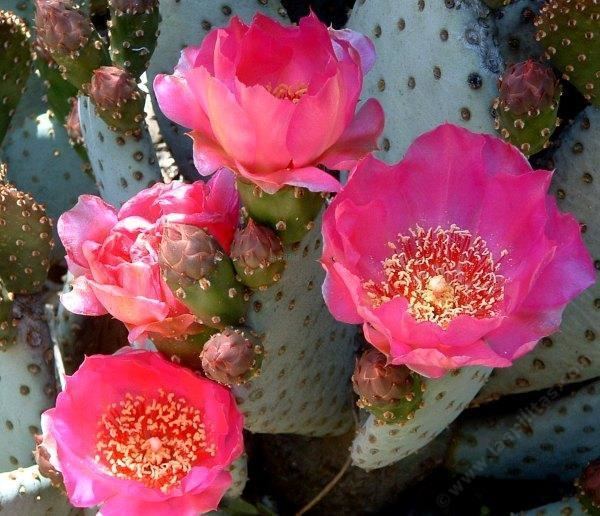
The species is variable in nature and several names under different ranks has been described to science. Only four of these are generally accepted.
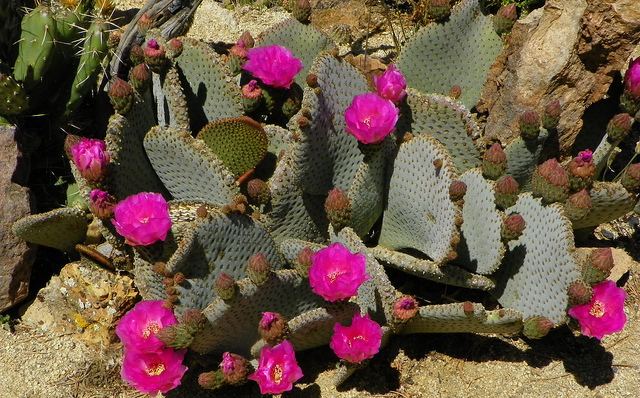
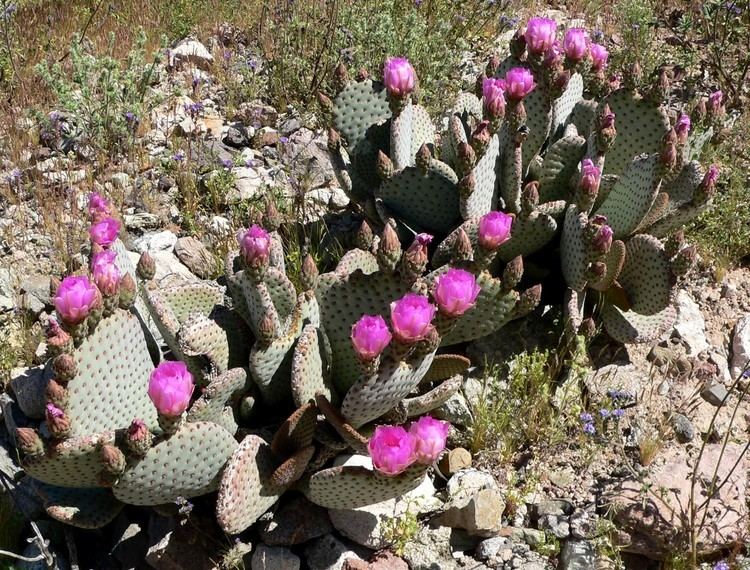
Some experts consider the Trelease's beavertail to be a full species (Bowen 1987, R. van de Hoek). It is unique among the varieties of Opuntia basilaris in that the areoles contain spines in addition to the bristles; this indicates that the species does vary a lot in its exterior.

Chemistry
Opuntia basilaris contains 0.01% mescaline and 4-hydroxy-3-5-dimethoxyphenethylamine.
Uses
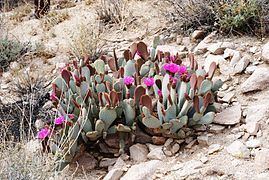
The Cahuilla Native Americans used beavertail as a food staple. The buds were cooked or steamed, and then were eaten or stored. The large seeds were ground up to be eaten as mush.
